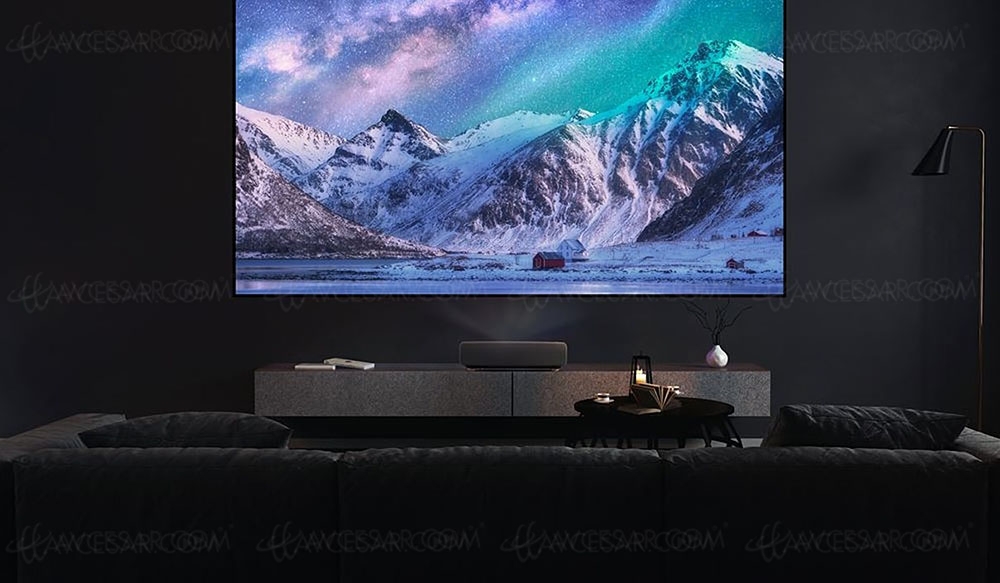If the Optoma CinemaX P1 4K Ultra Laser and Optoma CinemaX P2 4K Ultra Laser Cinema, as their reference indicates, were based on a laser light source, the Optoma L1 uses four LEDs, i.e. an RGB trio enhanced by a white diode. The desired goal is therefore luminosity but also with a measured energy consumption. If, aesthetically, the resemblance is strong between the P1 and the L1, the latter nevertheless plays softness with a rounded design.
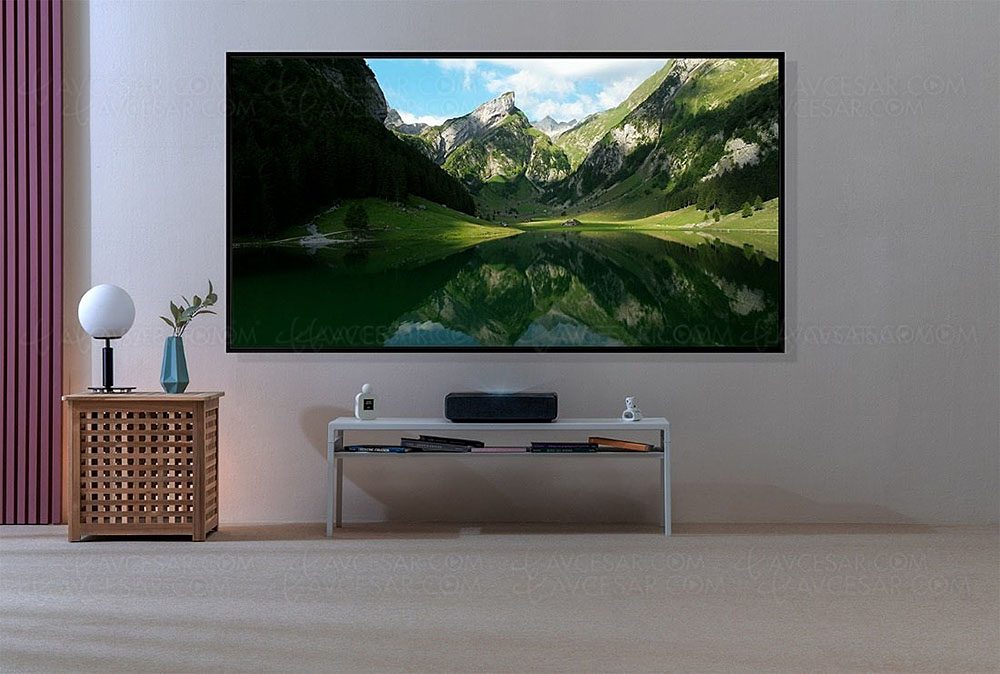
90% of DCI-P3 gamut and peak light at 2,500 lumens
This ultra-short-throw projector therefore (to the editorial staff, we still love this concept and still does), offers an image up to 105'' (267 cm) for a setback of only 30 cm (throw ratio 0.25 :1 and native offset of 126%). This opens new horizons in terms of interior decoration, the video projector being of a size equivalent to that of a mini Hi-Fi system.
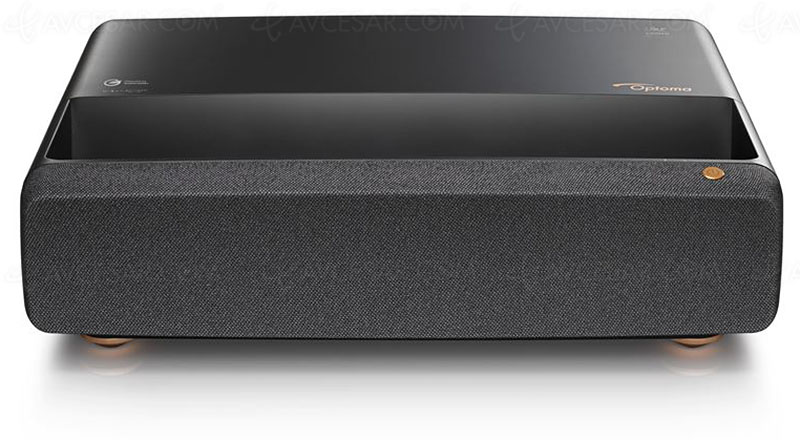
For the rest, the Optoma L1 therefore embeds a TI DLP chip with XPR (wobulation) technology to display the 8.3 million pixels required for Ultra HD 4K resolution. The 4LED light source boasts a lifespan of 30,000 hours (Eco mode) without any maintenance, and a peak light output of 2,500 lumens for a contrast ratio displays of 1,800,000:1. In the end, the coverage of the Rec.709 gamut is ensured at 100%, 90% for that of the DCI-P3. Namely, the Optoma L1 is HDR10 and HDR HLG certified.
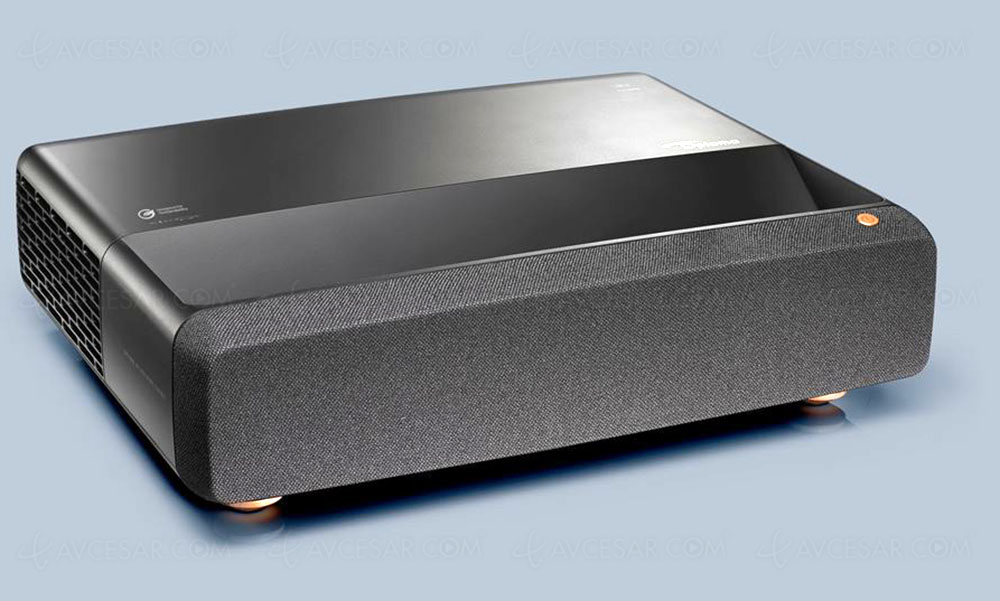
In the audio chapter, we note the presence of two speakers with a total power of 20 watts. There is also a horizontal and vertical keystone correction of, each, 30 degrees. Likewise, it is a 3D Ready model that is also 3D DLP Link compatible.
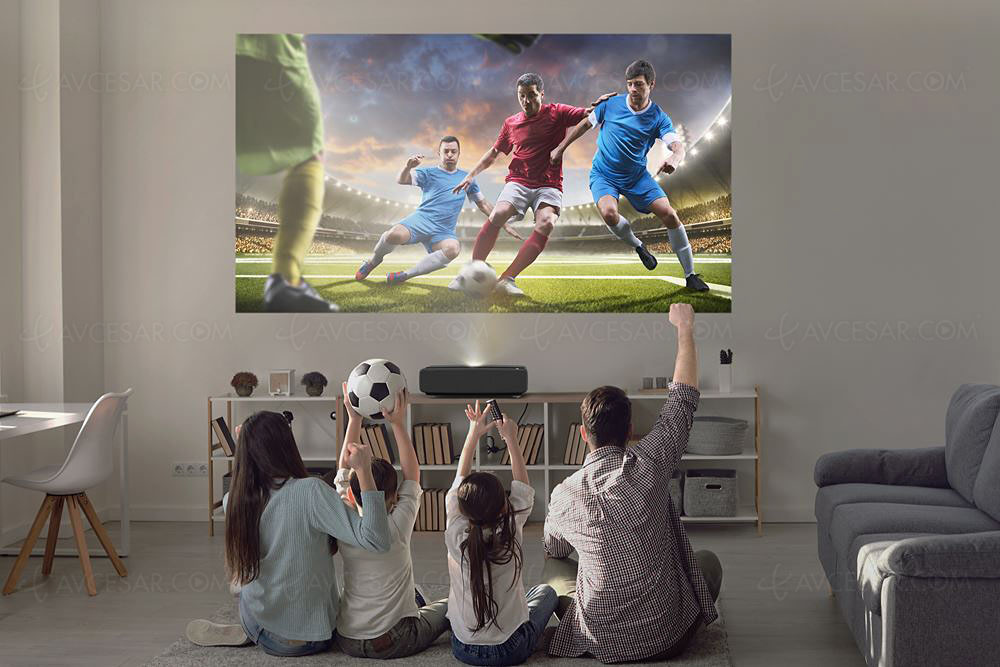 Connectivity and Input Lag The connection has three HDMI 2.0 inputs, a USB port, a micro-USB port, an optical output and a 3.5 mm mini-Jack stereo output. Besides home cinema sessions, the Optoma L1 will also be ideal for gamers with an Input Lag of 27.4 ms in the presence of a 2160p signal at 60 Hz and 15.2 ms with a 1080p signal at 240 Hz.
Connectivity and Input Lag The connection has three HDMI 2.0 inputs, a USB port, a micro-USB port, an optical output and a 3.5 mm mini-Jack stereo output. Besides home cinema sessions, the Optoma L1 will also be ideal for gamers with an Input Lag of 27.4 ms in the presence of a 2160p signal at 60 Hz and 15.2 ms with a 1080p signal at 240 Hz.  And finally, a few words on the operating noise given between 26 dB and 28 dB depending on the Image modes selected, and a few others on the consumption of the Optoma L1 given between 95 W and 170 W , again depending on the Image modes and the nature of the image displayed, for 0.5 W in standby. Availability expected in early summer. Indicative price: 1,799 euros.
And finally, a few words on the operating noise given between 26 dB and 28 dB depending on the Image modes selected, and a few others on the consumption of the Optoma L1 given between 95 W and 170 W , again depending on the Image modes and the nature of the image displayed, for 0.5 W in standby. Availability expected in early summer. Indicative price: 1,799 euros.
Reminder of the key features of the Optoma L1:
• Mono-DLP type
• 4K Ultra HD resolution
• Contrast: 1,800,000:1
• Light source: 4LED (RGB + white diode)
• Brightness: 2,500 lumens
• Input Lag: 27.4 ms in 2,160p at 60 Hz and 15.2 ms in 1,080p at 240 Hz
• XPR Wobulation functions
• HDR10 compatibility
• 3D Ready compatibility (BD 3D and DLP Link)
• HDR HLG compatibility
• Gamut: 100% Rec.709 and 90% DCI -P3
• Sound section: 2.0
• Power: 20 W
• 3D compatibility: yes
• Connections: three HDMI 2.0 inputs, one USB port, one micro-USB port , an optical output and a 3.5 mm mini-jack stereo output
• Sound level: from 26 dB to 28 dB
• Lamp life: 30,000 hours (in Eco mode)
• Vertical keystone correction: +30/-30 vertical and horizontal
• Weight: 5.1 kg
• Consumption: 95 W to 170 W depending on use
• Dimensions (L x H x D): 400 x 316 x 102.3 mm
